Intel Haswell-EP Xeon 14 Core Review: E5-2695 V3 and E5-2697 V3
by Ian Cutress on November 20, 2014 10:00 AM ESTCPU Benchmarks
The dynamics of CPU Turbo modes, both Intel and AMD, can cause concern during environments with a variable threaded workload. There is also an added issue of the motherboard remaining consistent, depending on how the motherboard manufacturer wants to add in their own boosting technologies over the ones that Intel would prefer they used. In order to remain consistent, we implement an OS-level unique high performance mode on all the CPUs we test which should override any motherboard manufacturer performance mode.
HandBrake v0.9.9: link
For HandBrake, we take two videos (a 2h20 640x266 DVD rip and a 10min double UHD 3840x4320 animation short) and convert them to x264 format in an MP4 container. Results are given in terms of the frames per second processed, and HandBrake uses as many threads as possible.

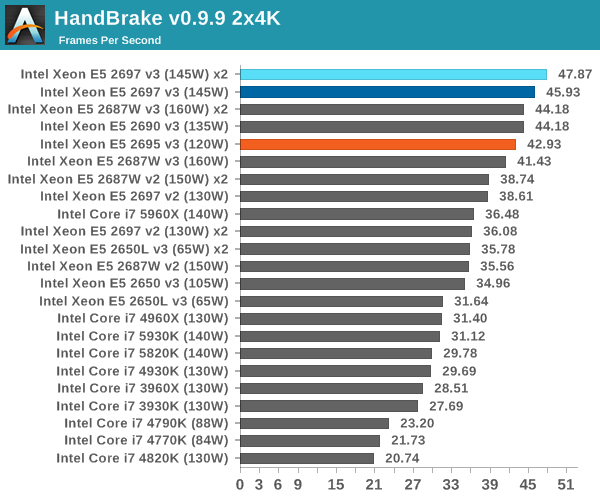
Dolphin Benchmark: link
Many emulators are often bound by single thread CPU performance, and general reports tended to suggest that Haswell provided a significant boost to emulator performance. This benchmark runs a Wii program that raytraces a complex 3D scene inside the Dolphin Wii emulator. Performance on this benchmark is a good proxy of the speed of Dolphin CPU emulation, which is an intensive single core task using most aspects of a CPU. Results are given in minutes, where the Wii itself scores 17.53 minutes.
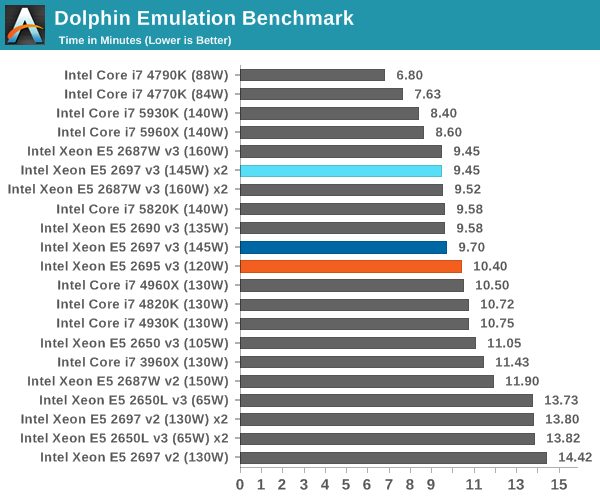
WinRAR 5.0.1: link
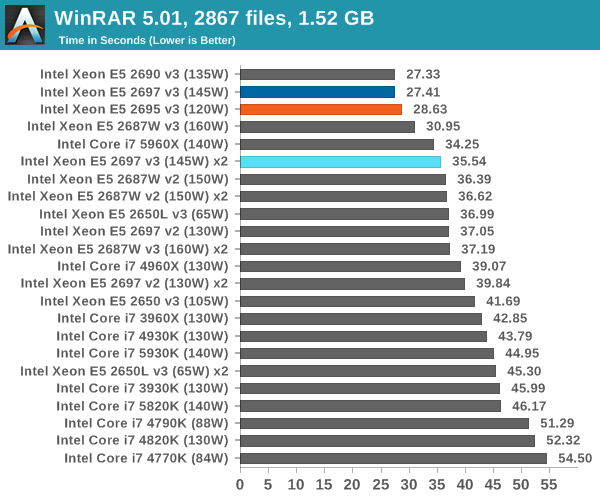
PCMark8 v2 OpenCL
A new addition to our CPU testing suite is PCMark8 v2, where we test the Work 2.0 and Creative 3.0 suites in OpenCL mode.
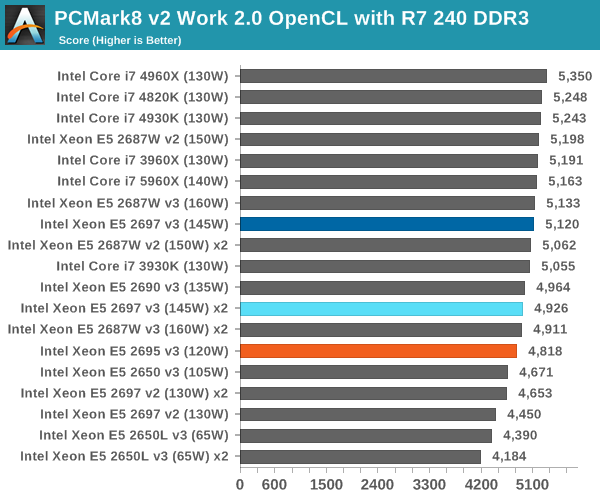
Hybrid x265
Hybrid is a new benchmark, where we take a 4K 1500 frame video and convert it into an x265 format without audio. Results are given in frames per second.
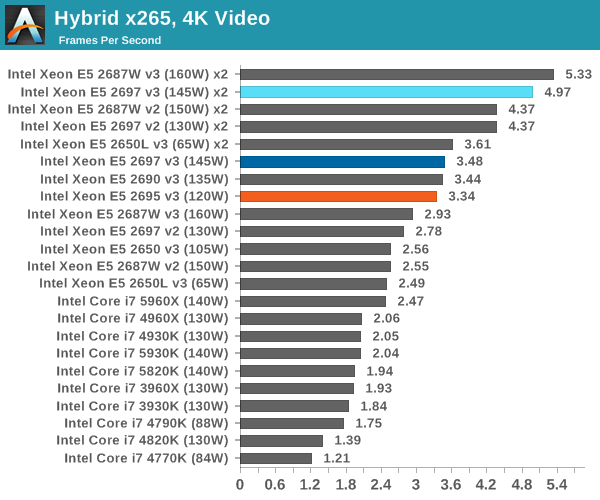
3D Particle Movement
3DPM is a self-penned benchmark, taking basic 3D movement algorithms used in Brownian Motion simulations and testing them for speed. High floating point performance, MHz and IPC wins in the single thread version, whereas the multithread version has to handle the threads and loves more cores.
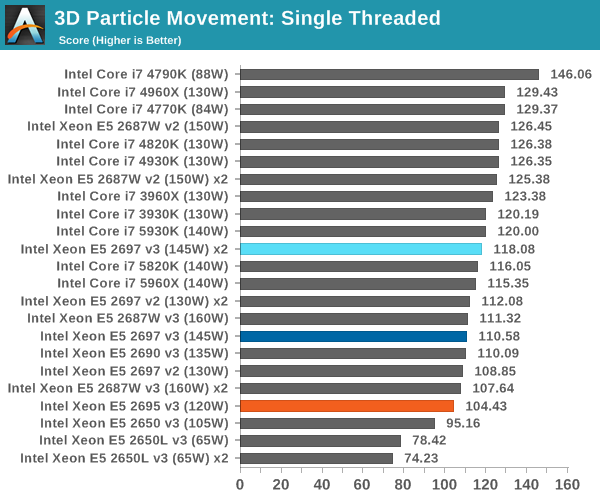
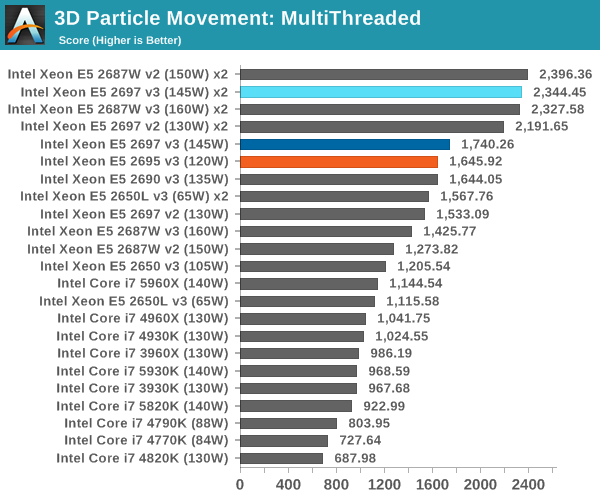
FastStone Image Viewer 4.9
FastStone is the program I use to perform quick or bulk actions on images, such as resizing, adjusting for color and cropping. In our test we take a series of 170 images in various sizes and formats and convert them all into 640x480 .gif files, maintaining the aspect ratio. FastStone does not use multithreading for this test, and results are given in seconds.

Web Benchmarks
On the lower end processors, general usability is a big factor of experience, especially as we move into the HTML5 era of web browsing. For our web benchmarks, we take four well known tests with Chrome 35 as a consistent browser.
Sunspider 1.0.2
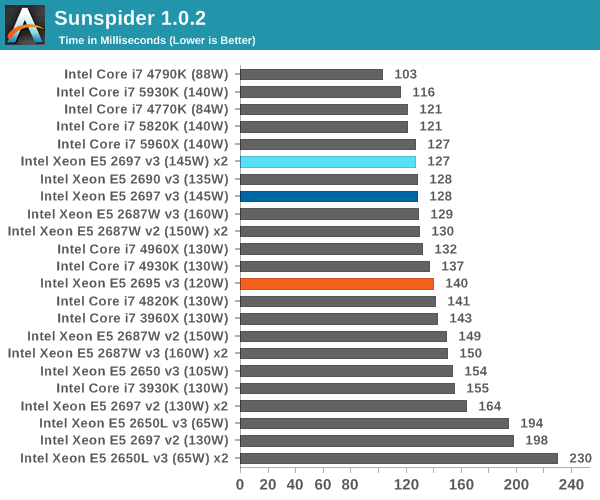
Mozilla Kraken 1.1

WebXPRT

Google Octane v2
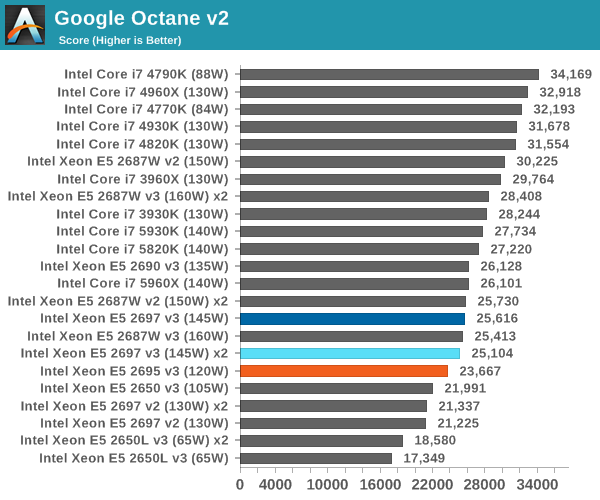










44 Comments
View All Comments
bill.rookard - Thursday, November 20, 2014 - link
I don't think I'd want one. If you notice, a majority of the benchmarks which a normal person might find useful the i7-4790K came in highest and flat out won 12 of those benchmark tests. And of course it costs about 1/10th the price.MrSpadge - Thursday, November 20, 2014 - link
Since he's reading AT I don't think he's a normal "person" ;)dgingeri - Thursday, November 20, 2014 - link
you're right about that. I'm a systems admin in a test lab. I'd want it for my VM practice system. A Core i7 3930k isn't quite as nice to run a dozen VMs as I had hoped.cjcoats - Thursday, November 20, 2014 - link
About those Linux benchmarks:1) That "NPB, Fluid Dynamics" reports millions of operations _per thread_, which is deceptive as regards actual delivered "in your face" work performed per wall-clock time; the existing chart should be supplemented by one giving [ops per thread per sec]*[number of threads] -- i.e., total ops per sec, which is what I really care about.
2) For Linux benchmarks in general: what compiler and compile-flags? ...and is this "one binary for all the machines"? The performance can be greatly influenced by targeting the actual processor architecture ("-xHost" for Intel compilers, "-march=native -mtune=native" for Gnu. For the codes I use and the (SandyBridge or later) servers I use, targeting the architecture I'm running on typically may give as much as a 70% boost, which is nothing to sneer at when my run-times are measured in hours or even days.
mapesdhs - Friday, November 21, 2014 - link
Re your 2nd point, that's certainly true for th C-ray test. One can do all sorts of optimisationsto show huge performance gains which are not remotely realistic. Wouldn't surprise me if this
affects the other tests too.
Ian.
FriendlyUser - Thursday, November 20, 2014 - link
Will it play Assassin's Creed: Unity?anubis44 - Thursday, November 20, 2014 - link
You forgot to say: "BUT can it run (insert terribly optimized pig-of-a-game here) ?"Cravenmor - Thursday, November 20, 2014 - link
Enjoying my coffee...Laststop311 - Thursday, November 20, 2014 - link
These xeons are just crazy priced. I would be happy with an i7-5960k clocked at 4.2ghz to match my i7-980x clocked at 4.2ghz. But really even after 4 years the performance increase still does not justify spending close to 2000 on cpu + x99 mobo + 4x8GB ddr4. Since broadwell is just a tick broadwell-e probably wont justify the expense either so maybe after 6 years have passed with gulftown skylake-e will finally make the expense worth it. Even if not the extra features like pci-e connected storage, ddr4 and pci-e 4.0 will finally make it worth it. By then the ridiculous ddr4 ram prices should be in line with how ddr3 is priced now too.wallysb01 - Thursday, November 20, 2014 - link
You must not be doing much heavily threaded work then, because for those that are the total system performance delivered with say, a $7K workstation, has gone through the roof compared to westmere.For example, the X5660 was 6 cores at 2.8GHz and the E5-2650v3 is 10 cores at 2.3GHz, but actually operates at 2.5GHz (something westmere didn’t do with the difference in turbo binning), both for a little over $1000 bucks each. Then, if we add 5% performance per generation, that brings the 2.5GHz to 2.9 “westmere equivalent” GHz. Then the 10 core vs 6 core means the E5-2650v3 is giving you 70% more performance than the X5660 did.